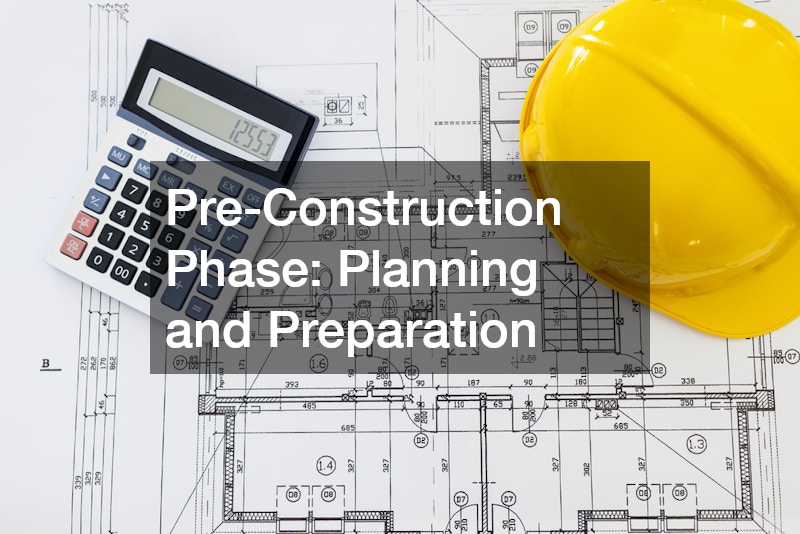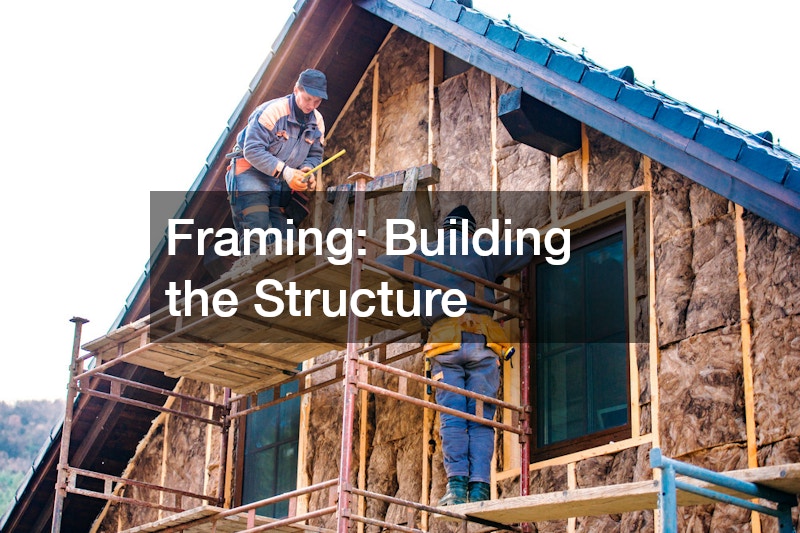Building a new home is an exciting, rewarding, and sometimes overwhelming journey. Whether you’re constructing a custom home from the ground up or completing a major remodel, the home construction process is intricate, involving multiple stages, skilled contractors, and a detailed timeline. From choosing the right plot of land to enjoying your final walk-through, understanding what to expect at every step will help make the entire process smoother and less stressful.
This blog will walk you through every stage of the home construction process, providing insights into the critical phases involved, the professionals you’ll work with, and tips for a successful build. We will also touch on specific areas that are vital to modern home construction, such as working with custom home builders, hiring HVAC contractors, and the importance of selecting quality materials like hurricane windows.

1. Pre-Construction Phase: Planning and Preparation
Before any actual work begins on your property, there is a lot of planning and preparation to do. The pre-construction phase sets the tone for the entire project and ensures that the construction process goes smoothly. Here’s what to expect:
Choosing Your Lot and Location
The first and most important decision you’ll make in your home construction journey is selecting the right lot. Factors like location, proximity to schools, work, and amenities, as well as zoning laws and land accessibility, will all play a role in determining where you build your dream home.
If your chosen lot is part of a new development, you may need to check the community’s building guidelines. Consider how much sunlight, wind, and natural elements your lot will receive. For example, if you live in a hurricane-prone area, it might be essential to work with professionals who specialize in hurricane windows to protect your home from storms.
Choosing a Builder
Once you’ve settled on your plot of land, it’s time to find the right builder. Working with custom home builders ensures that your home will be built exactly as you envision it. Look for builders who have experience in the type of home you want to create and check their portfolio to ensure their style aligns with your vision. Discuss the project timeline and get a sense of their process and communication style.
If you’re building in an established neighborhood, you might also need to hire siding companies and roofing companies that are familiar with the area’s regulations and weather conditions. For example, you’ll want to ensure your siding is durable and properly insulated for both the summer heat and winter cold.
Design and Blueprints
Working with architects and designers is a crucial part of the pre-construction phase. These professionals help you finalize your plans, ensuring that every detail is accounted for. Your blueprints should cover every aspect of your home, from its layout and structural elements to its mechanical systems, like plumbing and HVAC. During this stage, you’ll also select materials like roofing, siding, and flooring, and finalize the location of windows, doors, and other structural elements.

2. The Foundation: Breaking Ground
Once all the planning and paperwork are complete, it’s time to break ground. The foundation is arguably the most important part of your home’s construction because it supports everything that comes after. There are several types of foundations to choose from, including slab, crawl space, and full basement foundations, and the type you choose will depend on your location, soil, and climate.
Site Preparation
Before the foundation can be laid, the site needs to be properly prepared. This includes clearing the land, grading it, and ensuring proper drainage to prevent water damage. For some properties, excavation may be necessary to level the ground. Depending on the location, you may also need to work with local septic installation experts to ensure your property has the proper systems for water and waste disposal.
Laying the Foundation
The foundation is poured next, with concrete footings and walls forming the base of your home. It’s critical that this process is handled by professionals, including plumbing companies, for any necessary groundwork for water and waste systems. Once the foundation has been poured and cured, you’re ready to start building the structure above it.
3. Framing: Building the Structure
Framing is the stage in which the skeleton of your home is built. This is when the walls, floors, and roof structure are constructed, and your home begins to take shape. Here’s what to expect:
Frame Construction
During framing, builders will construct the home’s frame using wood or steel. This includes everything from the load-bearing walls to the roof trusses. The framing will also include openings for windows and doors, which will be installed later in the process. At this stage, you may also begin working with local glass companies to design and order windows that will fit within the frame.
Rough Plumbing, Electrical, and HVAC
Once the frame is up, the rough plumbing, electrical wiring, and HVAC systems are installed. This is a crucial part of the home construction process, as these systems will impact everything from the home’s energy efficiency to your comfort. Working with an experienced HVAC contractor ensures that your home will have the proper heating and cooling systems installed to suit your needs. It’s also a good time to start thinking about your paving and driveways, as this will affect the placement of utilities.
Installing the Roof and Siding
Once the frame is in place, your contractor will begin installing the roof, siding, and windows. The roofing system is essential for protecting your home from weather conditions, while the siding adds both aesthetic value and insulation. If you live in a coastal or hurricane-prone area, hurricane windows can be an essential addition to your construction project. These windows help protect your home during severe storms and add extra security.
4. Interior Work: Finishing the Structure
With the exterior shell of your home complete, it’s time to move on to the interior. The interior work phase focuses on installing all of the functional elements that will make your home livable.
Insulation and Drywall
The next step is insulation and drywall. Proper insulation ensures your home remains energy-efficient and comfortable. This is particularly important if you’re building in a climate with extreme temperatures. The drywall is installed next, covering the walls and ceilings, providing the base for finishing touches like paint and trim.
Plumbing and Electrical Fixtures
At this point, the final plumbing and electrical fixtures are installed. This includes everything from sinks and toilets to light fixtures, outlets, and switches. You’ll also work with contractors to install any specialized systems, like home security, smart home automation, or water filtration systems like Reverse Osmosis for swimming pool water.
Flooring, Cabinets, and Trim
Once the electrical and plumbing work is complete, it’s time for flooring, cabinetry, and trim work. You’ll have the opportunity to choose your flooring materials, whether that’s hardwood, tile, carpet, or another option. Custom cabinets will be installed in the kitchen, bathrooms, and other rooms, along with trim around windows and doors for a polished look.

5. Final Touches: The Finishing Details
The final touches of home construction make all the difference in the appearance and functionality of your home. These last steps include:
Interior Finishes
Paint, lighting, and final trim work are completed during this phase. Cabinets and countertops are installed, and the floors are finished. You may also have custom features added, such as built-in shelving or specialized lighting. During this time, you’ll also finalize any decisions regarding exterior landscaping, such as adding gardens, patios, or walkways.
Appliance Installation
The final appliances are installed, including major items like your stove, refrigerator, washer, dryer, and dishwasher. Depending on your preferences, you might also have special systems installed, such as water filtration systems for your home or pool.
Final Inspection
Before you can move in, a final inspection will be conducted. This inspection ensures that all aspects of your home are built to code and meet your contract’s specifications. The inspection will include everything from structural elements to safety systems like fire alarms and carbon monoxide detectors.
6. Post-Construction: Settling In
Now that your home is complete, it’s time to move in and start enjoying your new space. However, there are still a few tasks to tackle post-construction:
Landscaping and Outdoor Features
Landscaping is often one of the last steps in the home construction process. Professional fence installers can add fences for privacy, security, or aesthetics, while landscaping services will add greenery, gardens, and outdoor structures like decks or patios.
Addressing Any Issues
Even after moving in, it’s normal to have a few minor issues to address. Whether it’s a squeaky door, a leaky faucet, or a slight adjustment to a door frame, these post-construction fixes can usually be handled by contacting your local plumbing companies or other professionals.
Maintenance
Once your home is settled, it’s time to maintain its systems. Regular maintenance of your plumbing, HVAC, and roofing will keep everything functioning well. For your home’s exterior, such as siding and windows, cleaning and minor repairs will ensure long-term durability. You may also want to schedule regular inspections with roofing companies and HVAC contractors to ensure the home stays in good condition.

7. Post-Construction Warranty and Aftercare: Ensuring Longevity and Comfort
After you’ve moved into your new home, the construction process may feel like it’s over, but there are still a few important steps to take in ensuring the long-term comfort, durability, and functionality of your home. This is where post-construction warranty and aftercare come into play.
Understanding Post-Construction Warranties
Most homebuilders offer a post-construction warranty, which covers defects in materials or workmanship for a specified period after completion. It’s crucial to understand the details of your warranty before moving in to ensure you’re covered in case anything goes wrong.
-
Coverage of Major Systems: Typically, home warranties cover major systems like HVAC, plumbing, electrical systems, and roofing. For example, if there are issues with your HVAC contractor installation or the plumbing system provided by your plumbing companies, these may be addressed under warranty.
-
Foundation and Structural Issues: Structural concerns, such as problems with the foundation, framing, or siding, are also commonly covered under warranties. This is essential to know, as issues with the foundation can be costly to repair later on.
-
Time Frame of the Warranty: Understand how long your warranty lasts. Some warranties are valid for one year, while others may last longer for certain systems (like roofing or HVAC). Review the warranty document thoroughly, including what it covers and what it excludes, to avoid surprises later on.
Dealing with Post-Construction Issues
Even the most meticulously built homes can experience some issues after construction is completed. Here are common post-construction issues you might encounter and how to address them:
-
Settling and Cracking: It’s not uncommon for homes to settle after construction, leading to small cracks in the walls or foundation. If you notice this, document it and report it to the builder under your warranty.
-
HVAC System Problems: After your new HVAC system is installed, it’s important to ensure it’s running efficiently. Contact your HVAC contractor for an inspection if you notice any inconsistencies in temperature control or airflow.
-
Water Issues: Check for signs of water leaks, especially after heavy rainfall. If you’re using hurricane windows or have had water-resistant systems installed, make sure that everything is functioning as it should.
-
Roofing Issues: Inspect the roof periodically, as roofing issues can arise after installation, especially with extreme weather conditions. Contact your roofing companies if you see any signs of damage or leakage.
The post-construction phase is often overlooked, but it plays a vital role in maintaining the longevity and comfort of your newly built home. From understanding the details of your home’s warranty to conducting regular maintenance and inspections, staying on top of these tasks ensures that your home remains in excellent condition for years to come. Remember, the work doesn’t end when the last nail is driven; proactive care and attention to detail will preserve your home’s value and functionality.
Whether you’re working with custom home builders, HVAC contractors, or siding companies, the goal is to create a home that not only meets your needs during the construction phase but remains a safe, comfortable place for you to enjoy for many years. Taking care of your home with regular maintenance and addressing issues as they arise ensures that your new house continues to feel like a home.



